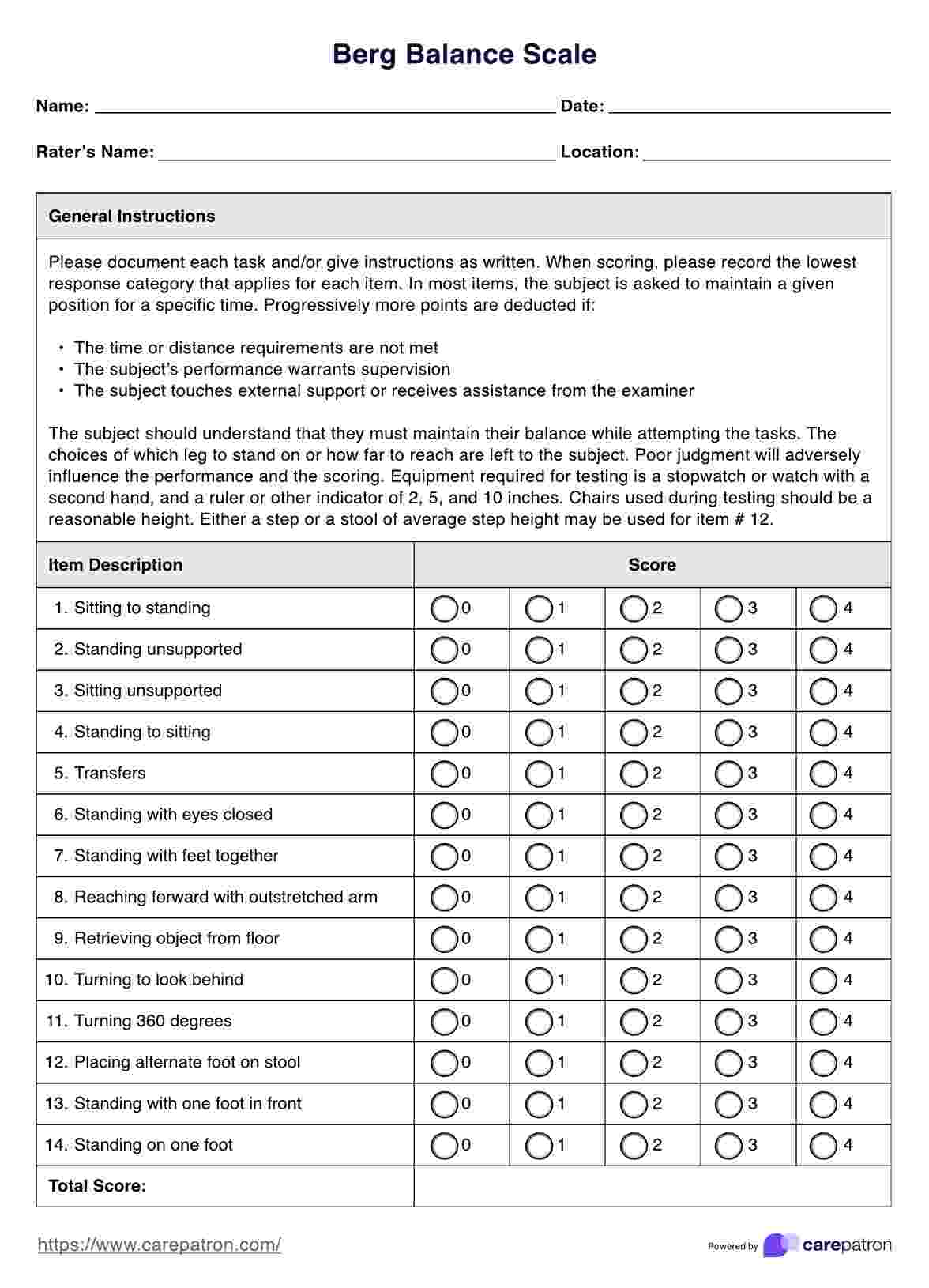Trained healthcare professionals, such as physical or occupational therapists, administer the Berg Balance Scale.

Explore the Berg Balance Scale for evaluating balance in elderly patients. Effectively assess stability and mobility to enhance daily living.
Trained healthcare professionals, such as physical or occupational therapists, administer the Berg Balance Scale.
Healthcare professionals use the Berg Balance Scale to assess a person's balance abilities, helping to identify fall risks and tailor appropriate interventions.
The Berg Balance Scale measures an individual’s overall balance. It covers various tasks like standing, sitting, reaching, turning, and more.
EHR and practice management software
*No credit card required
Free
$0/usd
Unlimited clients
Telehealth
1GB of storage
Client portal text
Automated billing and online payments